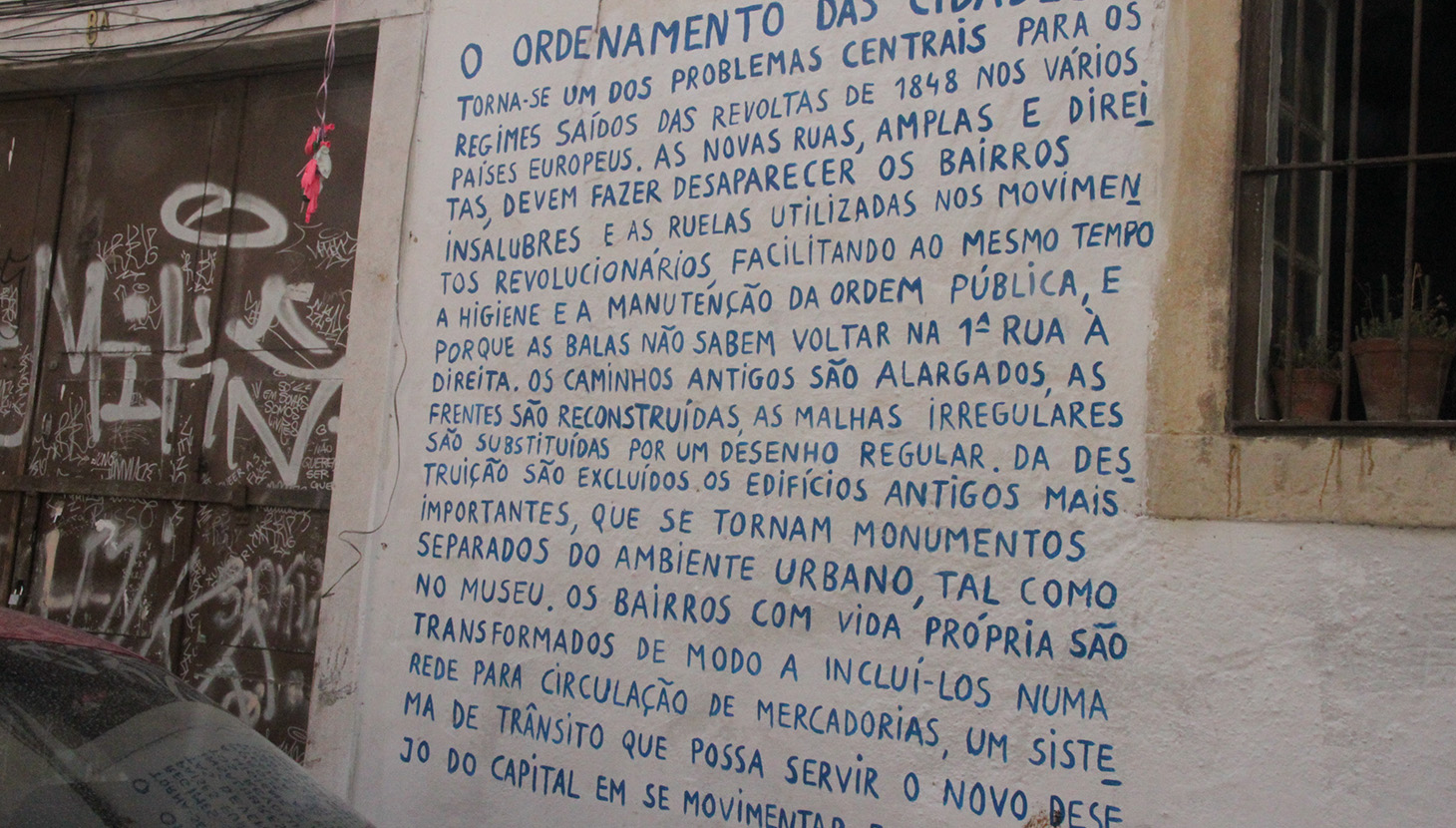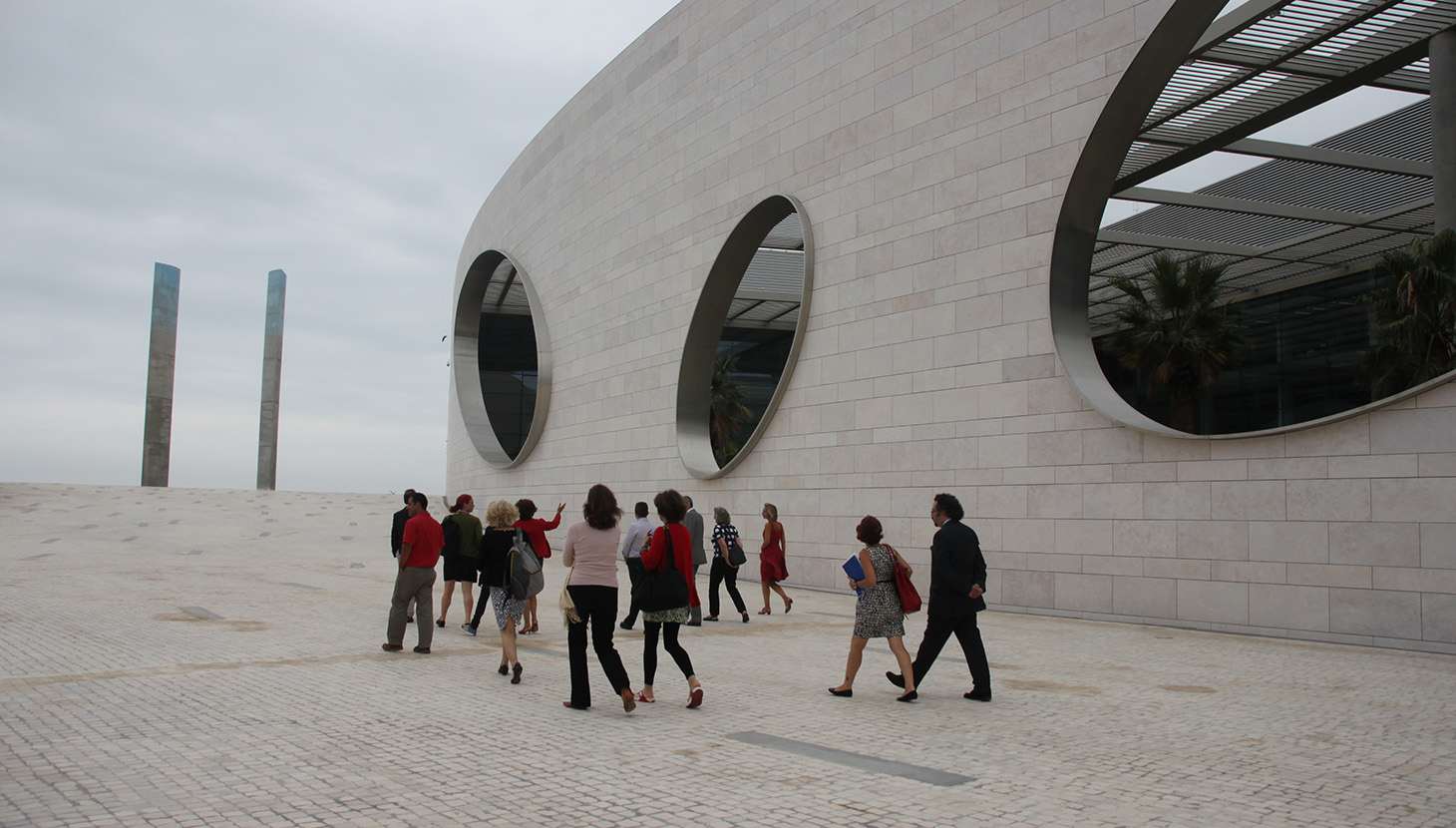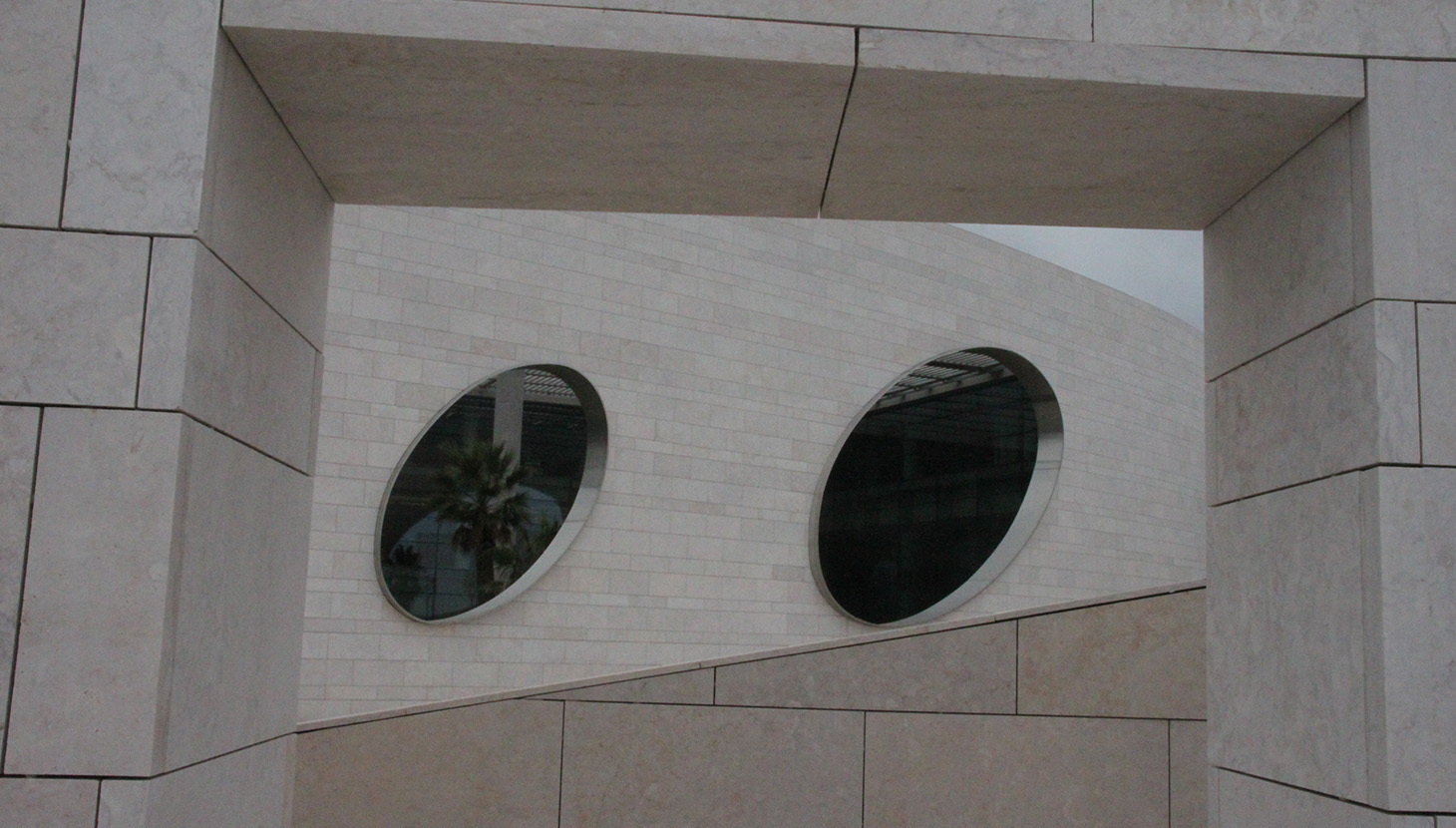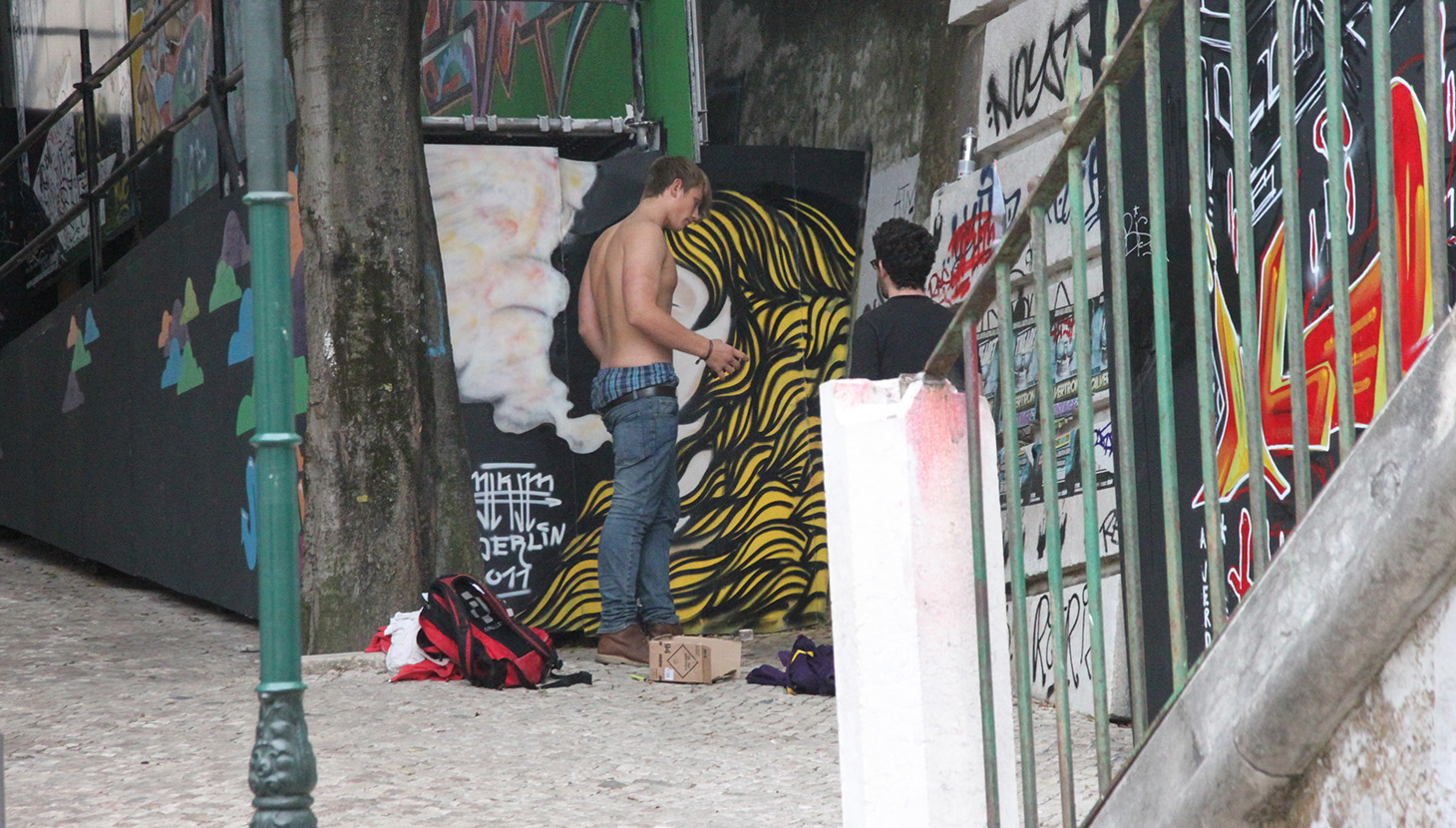 This is apart of the Learning From Lisbon Report, to read more click here.
This is apart of the Learning From Lisbon Report, to read more click here.
The municipal leadership in Lisbon has made major changes in terms of policies, practice and mind-sets in a relative short space of time since the current financial crisis hit the country in 2008. Major cuts in public sector resources, combined with a rapid contraction of private sector investment, created a very tough operating environment in Portuguese cities. Since public sector funding for programmes and projects was no longer sustainable, policy makers were forced to find new ways of working more closely with other real estate asset holders and investors, in both public and private sectors. They have also had to find ways of delivering improvements in poor neighbourhoods through collaborative working with local residents and businesses. But the leadership has not abandoned all of its previous policies and principles. Rather, they have developed an approach which adapts the best elements of established policies and strategies and augments these with new interventions and stimuli.
What Lisbon has managed to achieve to date is remarkable given the country’s dire economic conditions. Policy makers have accepted that they need to adopt a longer term view on physical regeneration which envisages improvements being made, albeit at a slower pace, over longer timescales and with a reduced number of strategic projects being complemented by an increase in smaller scale community-focused projects. There is also acknowledgement of the need to work more closely with the private sector to lever in their investment. “Smarter, leaner and more efficient” is the new city dictum. Their highly-strategic approach has reinforced their ability to deliver, both with the public or the private sector; and is also creating a critical mass of focused activities which are generating forward momentum. Crucially, this will put the city in a good position to capitalise, as and when the economy begins to recover.
The hallmark of the new approach in Lisbon is the combination of top-down, strategic innovations, to deliver both city-wide market stimuli and a limited number of prestige projects, with a sustained commitment to delivering bottom-up community-led initiatives which are targeted at poor neighbourhoods.
4.1 Market stimuli and creative asset management
The new Master Plan provides not only new policies and strategic objectives but also a new set of policy instruments to help deliver the strategic objectives. As reviewed in section 2.1 above, a series of innovations have been put in place to stimulate real estate activity in the city. These include designating 80% of the land within the city’s boundaries as ‘an historic area’ and providing developers with fiscal incentives, such as a reduction in VAT from 23% to 6%. There have been additional non-fiscal incentives, such as cutting the time taken to issue building permits; the replacement of the former strict ‘zoning’ system has been with a more flexible approach to development management that enables the delivery of mixed-use projects and neighbourhoods. However fined penalties are awarded, for those who fail to comply with improvement notices or to deliver approved renovation projects. These measures have also been complemented by the introduction of transferable (and if justified by developer performance, enhanced) development rights to stimulate investment, particularly in the Master Plan’s eleven priority investment districts.
These innovative approaches have the potential to facilitate a series of interconnected positive impacts. New entrants to the real estate market are encouraged, which has also increased competition and improved development quality standards (notably in terms of design) and has diversified the market offer. Secondly the expansion and diversification of the pool of development actors in the city has worked to reduce dependence on a limited number of developers who might otherwise wield an overtly-strong influence on the market. Finally, the simple fact of having a bigger pool of new and experienced development actors means that the potential impacts of a major ‘shock’ are reduced, should a key player fail to deliver or cease trading.
It will of course be some time before the effectiveness of these innovations can be assessed. However, this system of rewarding businesses and developers for achievement of clearly-measurable goals, and penalising those who fail to deliver, appears to be working because, despite the economic situation – a significant scale of ongoing development activity has been noted. Rigorous monitoring and evaluation will be needed to assess the impact of the city’s ‘carrots and stick’ package.
In addition to improving the investment environment for the private sector, the city has also become much more astute at maximising the influence of, and returns from, its land and property assets. The city is still the biggest landowner in the city, with more than half of the metropolitan area – referred to locally as ‘Lisbonopolis’ – still in the municipality’s ownership. Working more closely with other public agencies and with the private sector enables the municipality to ‘pool’ assets and to create investment, delivery and output synergies with its partners, particularly the Port Authority. The proposed southern extension of the Parque das Nações area, the Oriente Riverfront Park, incorporates many of the historic waterfront features, such as industrial gasometers and old pier heads. This strategic project exemplifies the type of project which the city is steadily putting into the development pipeline.
Strategic projects which built on the Parque das Nações major developments include the ‘Champalimaud Centre For The Unknown’. This is an excellent example in which the city has worked with a private organisation to deliver a major scheme that ticks the boxes on a number of regeneration objectives, whilst at the same time discarding long-held plans that local residents had campaigned strongly against.
The Champalimaud Foundation is a private Portuguese biomedical research foundation, headquartered in Lisbon, which supports biomedical sciences, particularly in the fields of neuroscience, vision and oncology. At €1 million its annual vision award is one of the highest monetary awards in any field of science. The Foundation worked with the Lisbon municipality on a waterfront brownfield site to the south-west of the city centre, close to the city’s historic Torre de Belém and the old fishing port area of Pedrouços, to develop the Champalimaud Centre, a new 60,000m2 high-tech research centre featuring diagnostic and treatment units for cancer patients and research labs.
Opened in 2010, the Centre’s location is of great historical significance, as this was the point from which many great Portuguese explorers such as Vasco de Gama sailed to discover the “unknown” in the 15th and 16th centuries. The new Centre echoes this in both its name and in the epic adventure of scientific research that the Centre now hosts. As a part of the deal with the Champalimaud Foundation, the municipality also managed to secure free access for the public to the River Tagus waterfront through wide landscaped areas around the new buildings, thus delivering on their strategic objective of re-establishing the relationship of the city’s residents with the sea and a key part of the nation’s heritage. To reinforce the fact that the Centre is now fully embedded within the city of Lisbon, the city bid for and won the right to host one of the 7 races of the 2012 Volvo Ocean Race series, and built a 15-day nautically-themed festival around this.
Another feature of Lisbon’s new approach is the encouragement of ‘bottom-up’ community activity. For a city traditionally led from the top-down, by the strong hand of the municipality, this new approach to ‘social revitalisation’ is considered to be a truly revolutionary process because it is a bottom-to-top process which requires open, participative and cooperative methodologies new to both the municipality and its citizens. The regeneration programme for the bairros of Mouraria and PRODAC Marvila provide good examples of this.
4.2 Community-led neighbourhood regeneration
Mouraria:
This is one of Lisbon’s oldest neighbourhoods, founded in mediaeval times and located a little way inland just to the north-east of the current city centre. Its network of narrow streets and alleyways wind up and across the steep slopes up to the Moorish Castelo de São Jorge. Being just inland from the city’s main historic port, and the first neighbourhood for immigrants to settle in, it has had a somewhat unsavoury reputation for centuries. But it is also famed as the home of ‘fado’, the enduring traditional Lisbon musical culture. Today there is still a very diverse ethnic mix with a high proportion of immigrants, notably from Africa, South America and South East Asia. There are high levels of poverty and social exclusion, as the high rates of economic activity are the product of low paid jobs in the restaurant trade. Significant immigration continues at a high rate, but a high proportion of the early immigrants settled in the neighbourhood, as reflected in the higher than average percentage of elderly residents over 65 years old.
Not surprisingly, much of the neighbourhood’s historic building stock is in poor condition. Neither resident owners nor landlords have the resources to maintain or improve the rundown property.
Despite all these issues, the bairro has significant latent potential – it is centrally located and highly accessible, has high historic & cultural heritage value, a thriving and well-regarded restaurant scene (comprised of many small, good value-for-money family-run eateries serving traditional food), several large public spaces and a vibrant community.
The city has recognised this and has set out two key goals based on this:
- To improve the quality of life for existing residents.
- To attract a balanced mix of new residents, tourists, shoppers and entrepreneurs into to the neighbourhood – to make the neighbourhood sustainable but not to promote substantial gentrification and displacement.
One of the first municipal interventions was that the Mayor moved his office into the bairro. This boosted confidence in the future of the area, and is acting as a major anchor that is now catalysing increased investment. The subsequent approach the city has been characterised by a mixture of physical interventions and the socio-economic programmes. A mixture of funds from the EU, an EIB loan and from the city’s own Participatory Budget are being used in a focused Euro 13.5m 3-year programme of over 30 initiatives, involving over 30 partners from both within the neighbourhood and outside. The city was very clear that the process for the development of this focused programme was to be open and participative at all stages – assessment, planning and delivery/action.
Socio-economic initiatives to promote well-being, tackle poverty and social exclusion include ‘cleaning parties’ for public spaces, community kitchens, an open air cinema and most intriguingly a community security company (called ‘Sinhoritas’), which harnesses the considerable surveillance talents of the neighbourhood’s many elderly ladies – essentially, a Neighbourhood Watch Lisbon style.
Social initiatives are complemented by neighbourhood oriented physical interventions to improve the environment and to leverage local private sector investment. These include the renovation of the main public square and transport interchange at Praça Martim Moniz; and the creation of an ‘Innovation Centre’ – a work and support space for social entrepreneurs from a long-disused palace and gardens.
The city are also working hard to exploit the bairro’s cultural potential too, both as a means to attract tourists and to engage the community – including guided fado tours, 30-min dance open-air events called ‘Micro-Bailes’ (Micro-dances) and subsidising music/dance performances in homes for housebound elderly residents. A community-run cooperative hotel is also under development, as there is very little accommodation for tourists within the bairro itself. Finally a long-term project called ‘Common People’ (run by a Welsh artist, Camilla Watson, who has been based in the area for many years) has seen characterful sepia-tinted photographic portraits of many of the area’s residents affixed to walls of buildings, which reinforces sense of neighbourhood pride and belonging, as well as adding to its uniqueness.
The city have systematically embedded an evaluation process in these programmes, using KPIs such as: building vacancy rates, building permit requests from the private sector, unemployment rates and safety perceptions. The city is now also developing a ‘volunteer time bank’ of residents from within the community and people from outside neighbourhoods to try to ensure that many of these initiatives become self-sustaining. One of the key positive indicators to date has been the first-ever visit to the bairro of a Portuguese president from the democratic era, who in June 2012 did a 2-hour ‘walkabout’ in the neighbourhood.
There is little doubt that this neighbourhood regeneration programme is having a positive impact. Measures are in place to secure a sustainable legacy in terms of the capacity of the local community to ensure that gradual improvement is maintained. However, a key feature of the evaluation of the programme, yet to be undertaken, is the means by which this experience of community-based neighbourhood regeneration can be up-scaled in the context of a phased, long term neighbourhood regeneration programme which embraces many of the city’s other poor neighbourhoods. Has the Mouraria experience generated elements of a replicable approach to the improvement of the city’s poor historic neighbourhoods?
City policy makers are now addressing this issue and are developing a long term strategy and programme, albeit it the knowledge that the progress of implementation will be slow until economic conditions improve. But there is some cause for cautious optimism in terms of the fact that the system of participatory budgeting is continuing to develop and the advent of urban parishes will provide a much improved decision-making process and the opportunity to more successfully align municipal budgets to the needs of poor neighbourhoods. This continuing innovation has the potential to ensure that at whatever level of resources are available, more progress will be delivered through ‘localism Lisbon-style’.
Bairro PRODAC Marvila:
The ongoing regeneration of Bairro PRODAC Marvila illustrates the fact that the further development of neighbourhood regeneration in Lisbon will be able to draw on a wide range of experiences. This neighbourhood was a post-war informal (i.e. illegally established) community that evolved to accommodate people moving from the countryside to the city in the 1970s. These immigrants could not afford to live within the legally defined residential development areas and had no alternative but to develop their own housing on an underused area of land between two large municipal social housing estates. Starting initially with simple temporary shelters, the community increasingly organised themselves into two house building co-operatives, north and south of the busy road that divides the neighbourhood. The community now houses a population of 3,000.
For many years the municipality refused to recognise the community because the land was still in their ownership, and they refused to give the residents the necessary permits to officially make their status ‘legal’. The municipality also refused to provide services, and so the residents organised their own water supply, refuse collection and systems for maintaining their public spaces and street lighting.
Until recently the residents have lived under a longstanding threat of demolition. However, in the new Master Plan the municipality decided it was much more constructive to recognise the existence of a community, which has managed to organise and operate in such an orderly, efficient and co-operative manner for over 40 years. Architects have since been assigned from the municipality to work one day per week with residents in engaging them in the city’s groundbreaking participatory democracy process, to help obtain building permits and so become ‘legal’, and to help secure funding to allow for improvements to be made to: homes, services and public spaces. Residents contribute a small amount of money per annum (€50) towards the costs of this support. It is interesting to note that a film documenting the bairro’s struggle to be officially recognised, “Working With The 99%”, won the ‘Future Cities Prize’ at the 13th Venice Biennale in 2012.



